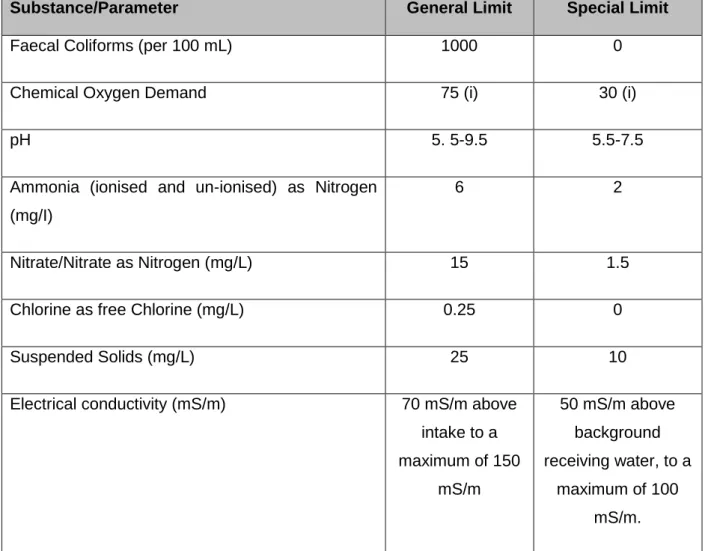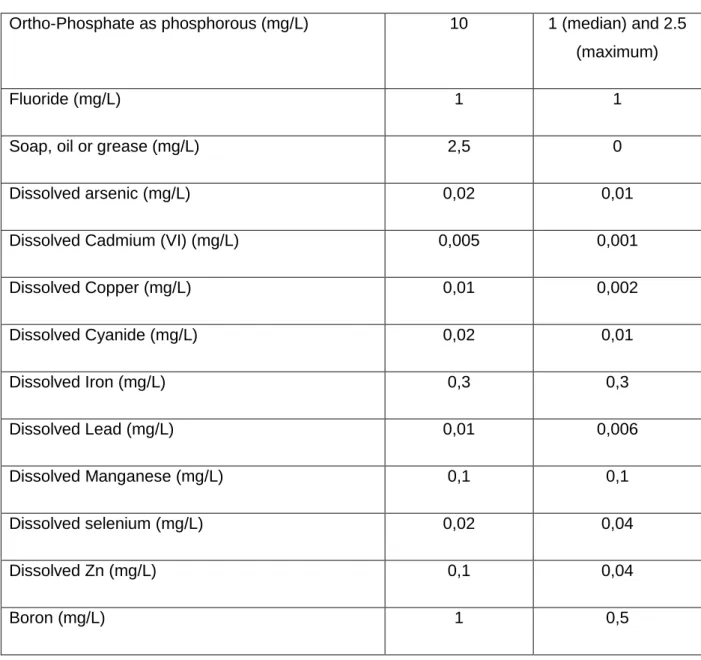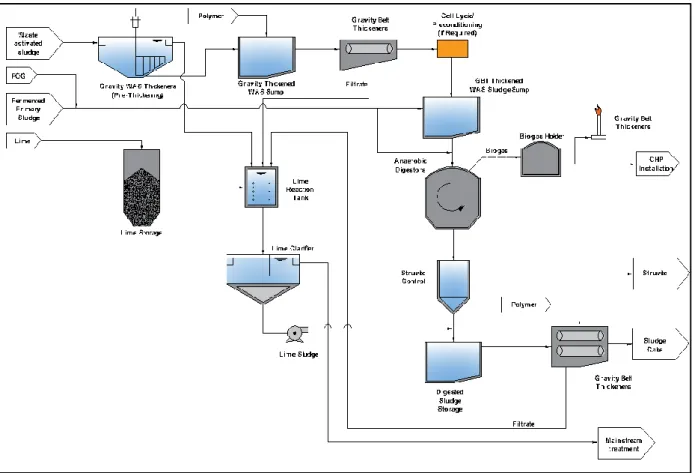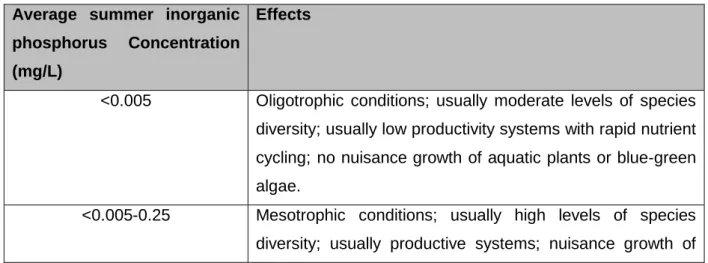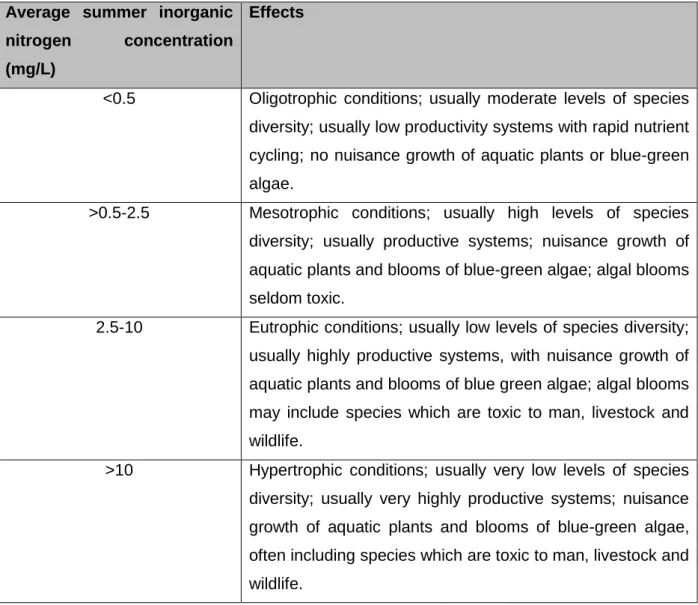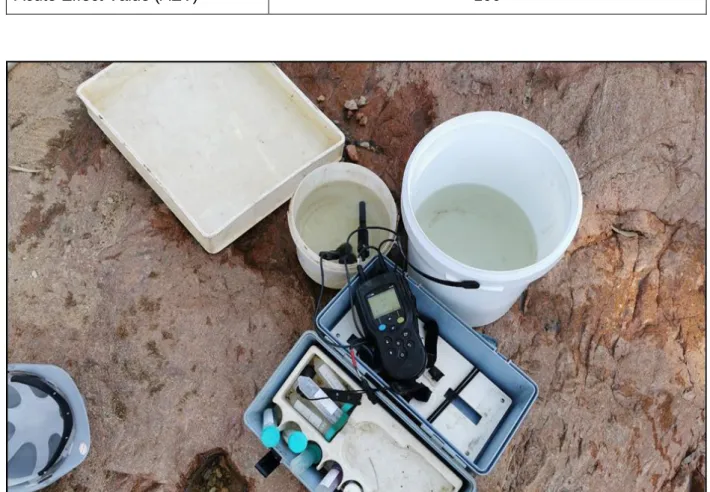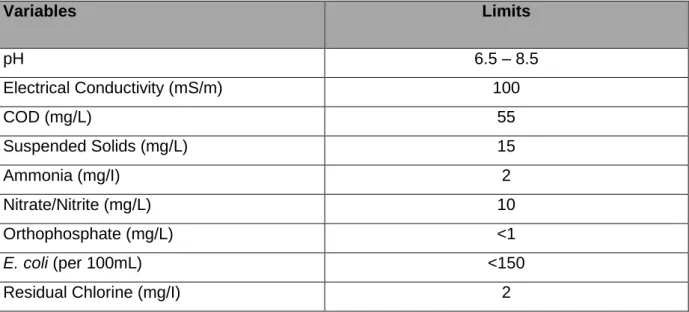The aim of the study was to look at the long-term impacts of Northern Wastewater Treatment Works' effluent on macroinvertebrates and water quality in the Jukskei River over ten years. The water quality was measured in situ with a manually calibrated HACH meter for primary data. It was found that the water quality of the Jukskei River exceeded some of the essential parameters (Ammonia, suspended solids and E. coli).
INTRODUCTION
- Background
- Problem Statement and Rationale
- Research question
- Research Aims
- Research Objectives
- Limitation of the study
- Layout of the Study
Does the Northern WwTW effluent have a long-term impact on macroinvertebrates and the water quality of the Jukskei River. This study aimed to investigate the long-term impact of effluent from Northern Wastewater Works on macroinvertebrates and water quality in the Jukskei River. It will be assessed against Northern WwTW water use license discharge limits, national general wastewater discharge limits, and resource quality objectives to determine any long-term impact on macroinvertebrates and water quality Jukskei River originating from Northern WwTW effluent.
LITERATURE REVIEW
- Infrastructure of Wastewater Treatment Plants in South Africa
- The State of Wastewater Treatment Plant in South Africa
- The Effects of Population Growth and Urbanization on Wastewater Treatment
- State of Water Resources in South Africa
- River Health
- Mechanism for Wastewater Service Regulation and Control
- National Environmental Management Act of 1998 (Act 107 of 1998)
- National Water Act of 1998 (Act 36 of 1998)
- Mechanisms Based on Incentives
- Potential Impact of Wastewater Effluent on Water Quality and
- Microbial Pollution Caused by Wastewater Effluents
- Physical and Chemical Pollution Caused by Wastewater Effluent
- Non-metals
- Sulphates
- pH
- Total suspended solids
- Nutrients
- Faecal Coliforms
- Temperature
- Electrical Conductivity
- Relevant Case Studies
- Study on the Impact of Wastewater on Macroinvertebrates and Water Quality
- State of Wastewater Treatment Works in South Africa
- Assessment of Water Quality and Associated Impacts of the Sewage Discharges
- Alexandra Township's Impact on the Jukskei River's Water Quality
- Historical Water Quality Trends in the Gauteng Province of South Africa's Jukskei
These historical and primary data were used to assess pollution trends and loads in the Jukskei River.
METHODOLOGY
Introduction
Description of the Study Area
- Jukskei River Catchment
- Geology, Soil and Topography
- Natural Vegetation
- Climatic Conditions
- Socio-economic Factors
The current flow measurement indicates that the combined capacity of the Northern basin will exceed the Northern WwTW capacity in the near future. The Northern WWTW has 4985 km of sewer mains which form part of the pipe network. It is one of the three largest rivers draining the northern suburbs of the Witwatersrand and originates from an underground spring in the Bezuidenhout Valley, east of Johannesburg (Gauteng Province).
Because of the relatively steep slopes, none of the streams in the catchment meander and the streams run fairly straight. According to Singh et al. 2015), the overall ecological status of the Jukskei River is in category D, which means that it is highly modified, with a significant loss of habitat, biota and ecosystem functioning. The overall ecological status of the Jukskei River is in a category D, which means that it is highly modified, with a significant loss of habitat, biota and ecosystem functioning.
The lowest reach of the river showed that the river is in an upper D ecological category. There appears to be an improvement in the ecological health of the reach since 2013, although the condition remains in a D category. The geology of the catchment area does not play a significant role in the drainage patterns as the catchment area is geologically relatively uniform (van Veelen, 2002).
Gauteng is the fastest growing province in the country according to the City of Johannesburg (2018), with Johannesburg accounting for an estimated 5.05 million of the province's total population.
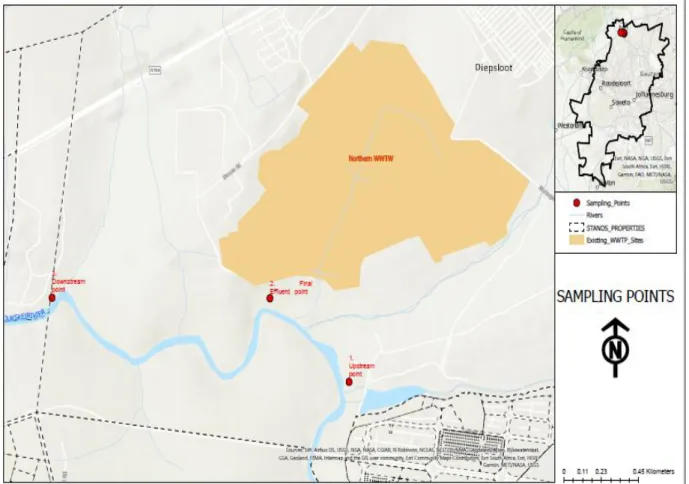
Data Collection
- Aquatic Macroinvertebrates
- Macroinvertebrate Response Assessment Index (MIRAI)
- Secondary Data
- Data Analysis
- Statistical Analysis
- Ethical Consideration
Due to the direct influence of water quality on aquatic ecosystems, the results are essential for the interpretation of biological results. The results were compared to Target Water Quality Range (TWQR) for aquatic ecosystems (DWAF, 1996) and Northern WwTW Water Use License (WUL) limits. The relevant water quality guidelines indicated in DWAF (1996a) were used to evaluate the trophic status of the watercourse as presented in table 4 and table 5, while standard conversions using pH and temperature were used to derive un-ionized ammonia concentrations (Table 5). (DWAF, 1996b).
Secondary data collected and analyzed monthly water quality measurements and biannual biomonitoring data by Johannesburg Water SOC Ltd. The ten (10) years of data from the selected monitoring points were obtained from January 2010 to October 2020 and were processed to determine the trends, seasonal variation, and contaminant loads for each water quality variable. The water quality results from the accredited JW Lab were compared with the existing water use license (WUL) dated May 2018 (Table 7), DWS general wastewater limit figures applicable to wastewater discharge into water sources, and RQOs of the Upper Crocodile (west) water management area (DWS, 2017). .
The data was analyzed using Microsoft Office Excel (2010) software to compare the secondary water quality data with issued discharge limits for water use permits, general wastewater discharge limits and RQO limits of selected monitoring points (Table 3), and to create time series graphs. to examine the changes in water quality variables over time. Microsoft Excel was used to compare water quality trends against the discharge parameters of the Water Use License, the DWS Wastewater Quality Guideline, and the RQS limits for ten years of selected measurement points (upstream, discharge, and downstream point). Time series plots were created to examine the changes in water quality variables over time for eight selected parameters from the secondary data obtained from JW.
The primary data were compared to the Target Water Quality Range (TWQR) for aquatic ecosystems (DWAF, 1996) and the Northern WwTW WUL limits.
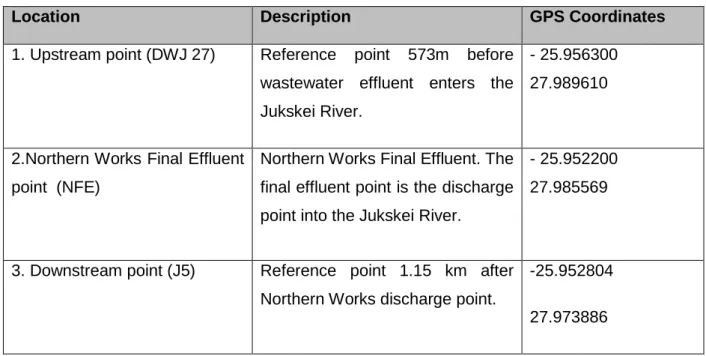
DATA ANALYSIS OF RESULTS AND DISCUSSION
Introduction
Presentation of Primary Data Collection
- Macroinvertebrate Results of Primary Data Collection
The high levels of suspended solids were expected to lower the biotic integrity of the Jukskei River. The total ammonia concentrations in Jukskei å increased upstream to downstream and indicated chronic toxic conditions for aquatic biota. The source of the hypertrophic and eutrophic conditions can be attributed to a combination of wastewater input and upstream land use within the Jukskei River and tributary catchments (Dube et al., 2017).
Despite discharge indicating modified water quality compared to the water quality on the Jukskei River. This can be attributed to moderate biotope diversity with stones in and out of stream, marginal vegetation from stream and sand compared to the poor biotope diversity on the Jukskei River. Therefore, habitat availability was the limiting factor for the local biota at the Jukskei River.
In July 2020, the MIRAI results derived an ecological category of class E/F or severely altered status for the Jukskei River. Poor water quality contributed to the impoverished community and was the main cause of the changed condition of the Jukskei River. The MIRAI results derived an ecological category of class E or severely altered status for both Jukskei rivers (Table 11).
Still, water quality and habitat were the dominant drivers of the modified state of the Jukskei River.
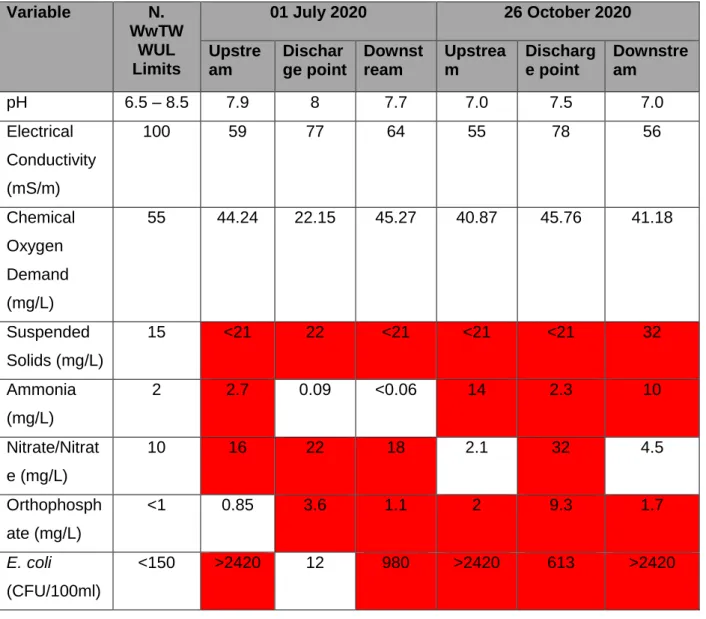
Presentation of the secondary Data
- Nitrate
- Orthophosphate
- pH
- Electrical Conductivity
- Chemical Oxygen Demand (COD)
- Suspended Solids
- Escherichia coli
- Summary of Biomonitoring Reports Analysis of Secondary Data Collection
- Summary of Compliance with Northern Works WUL Wastewater Discharge
A comparison of the seasonal concentration of ammonia from three selected monitoring points in the Jukskeåen between 2010 and 2020. It can be concluded that the discharge of wastewater from the works has not had a significant influence on the Jukskeåen's pH. This suggests that Northern WwTW's effluent volume may affect river health in the Jukskei River.
The study investigated the long-term effects of the effluent from the Northern Wastewater Works on the macroinvertebrates and water quality of the Jukskei River. The result of the water quality tests revealed that the effluent from the works partially complied with the WUL, RQOs and DWS general effluent limits discharged into the Jukskei River. Nutrients and the “dead zone”: the relationship between nutrient conditions and dissolved oxygen in the northern Gulf of Mexico.
Evaluation of water quality and associated impacts of the sewage discharges in the Mooi River catchment area (Doctoral dissertation, North-West University (South Africa). Soul of the Jukskei River: The Extent of Bacterial Contamination in the Jukskei River in Gauteng Province, South Africa Impact of Alexandra Township on the water quality of the Jukskei River (Doctoral dissertation, the University of the Witwatersrand and).
Evaluation of municipal wastewater treatment impacts on the receiving environment: a case study of the Olifantsvlei wastewater treatment plant in the Gauteng province, South Africa (Doctoral dissertation). An evaluation of the impact of municipal wastewater from the Lydenburg Wastewater Treatment Works, Mpumalanga, South Africa. Impact of industrial effluent on water quality of the receiving stream in Nakawa - Ntinnda, Uganda.
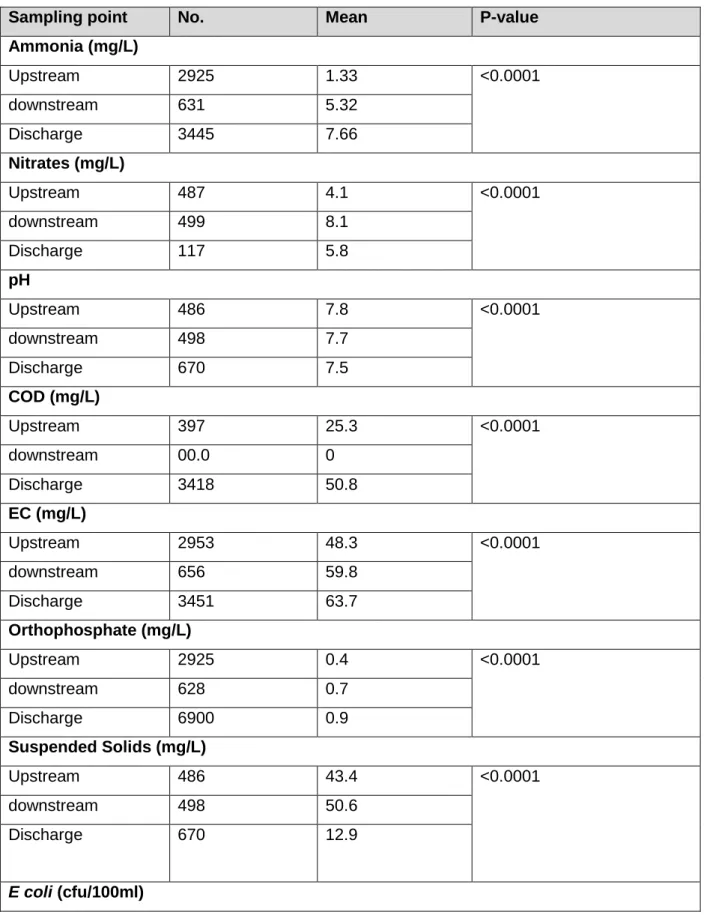
CONCLUSIONS AND RECOMMENDATION
CONCLUSION
The primary objectives of this study were to assess whether Northern Works wastewater had an impact on the macroinvertebrates and water quality of the Jukskei River System as a receiving environment; The overall results indicate a long-term effect due to the Jukskei River watershed being critically altered due to sources of non-point pollution and partial wastewater treatment at the Johannesburg Water Northern WwTW. The water quality results from the JW Lab clearly showed that the Northern Works were not fully compliant with the WUL wastewater standard, overall limits and RQOs.
The results showed that out of eight variables, only five complied with the WUL limits (EC, nitrate, COD, orthophosphate and pH) and the other three (ammonia, suspended solids, E. coli) did not comply with the WUL effluent discharge limit . . Over the course of ten years, the water quality has deteriorated, and thus the tolerant macroinvertebrates increased, while the intolerant macroinvertebrates decreased. The primary data also indicated that the poor water quality contributed to a poor macroinvertebrate community.
The overall results demonstrated the partial effectiveness of the Northern WwTW in treating wastewater discharged into the Jukskei River for the analyzed parameters of the three selected monitoring points. These can be the result of equipment failure or a high influx that exceeds the capacity of the Northern Works.
RECOMMENDATIONS
A desktop assessment of current ecological status, ecological importance and ecological sensitivity for sub-Quaternary extent for secondary catchments in South Africa. Effects of wetlands on water quality and invertebrate biodiversity in the Klip River and Natalspruit in Gauteng, South Africa. Impact of wastewater on surface water quality in developing countries: a case study of South Africa.
Do aquatic macroinvertebrate communities respond to land use effects in the Wilge River, Mpumalanga, South Africa? Municipal wastewater effluent as a source of listerial pathogens in the aquatic environment of the Eastern Cape Province of South Africa: a public health concern. Assessment of the physicochemical properties and prevalence of Escherichia coli and vibrios in the final wastewater from two wastewater treatment plants in South Africa: ecological and public health implications.
A case study of historical water quality trends in relation to the Jukskei River in Gauteng Province, South Africa. A case study of historical water quality trends in relation to the Jukskei River in Gauteng Province, South Africa (PhD dissertation, University of Johannesburg). South African Human Rights Commission, 2021 Final Report of the Gauteng Provincial Inquiry into the Vaal River Sewerage Problem.
Agricultural impact associated with runoff in relation to macroinvertebrate communities of the Lourens River, South Africa.
